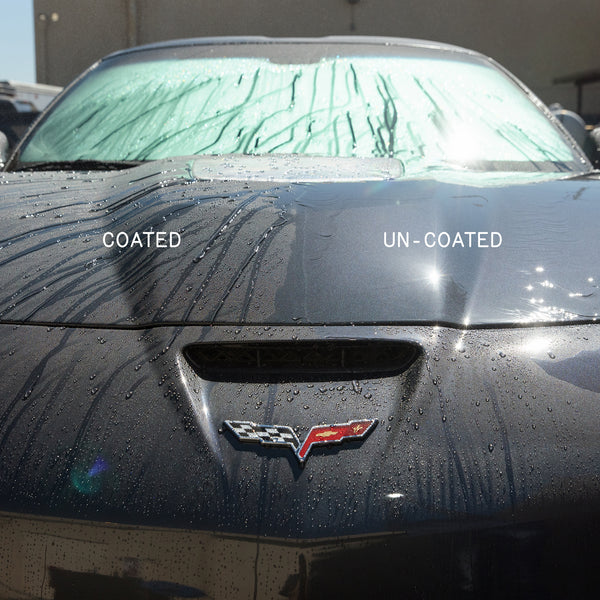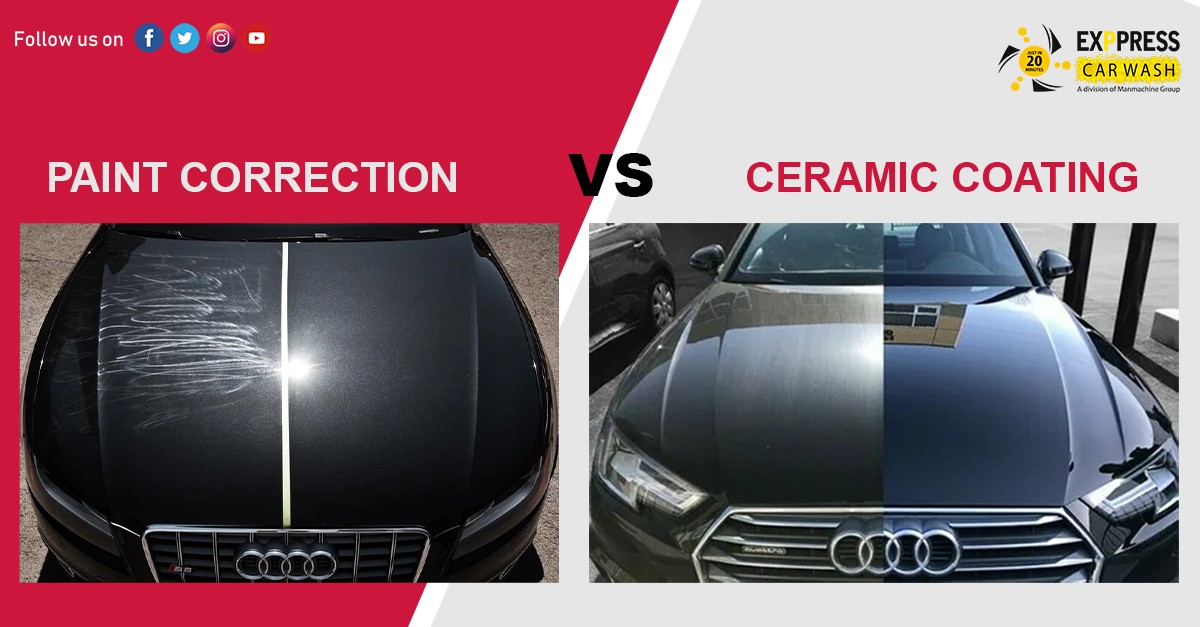The Role of Ceramic Coating in Maintaining a Flawless Finish on Your Vehicle
The Role of Ceramic Coating in Maintaining a Flawless Finish on Your Vehicle
Blog Article
Exploring the Scientific Research Behind Ceramic Finishing and Its Influence on Cars And Truck Detailing
The application of ceramic finish in car outlining represents a substantial advancement in automobile care, rooted in its advanced chemical homes, mostly silica dioxide and titanium dioxide. Recognizing the science behind these materials reveals not only the protective benefits they use but likewise their function in boosting a lorry's visual long life. As we explore the intricacies of the application process and the long-term implications for vehicle maintenance, it becomes clear that the choice of ceramic finishing can essentially change one's method to automobile treatment. What considerations should be made prior to dedicating to this transformative remedy?
What Is Ceramic Finishing?
Ceramic coating is a modern remedy that has obtained popularity in the automotive outlining industry for its capability to offer durable protection for vehicle surface areas. This advanced safety layer is usually made up of silica dioxide (SiO2), which forms a solid bond with the vehicle's paint, producing a durable guard versus environmental pollutants. Unlike traditional wax or sealants, ceramic coatings provide premium resistance to UV rays, chemical spots, and physical abrasions.
The application of ceramic layer includes a meticulous procedure, where the vehicle's surface area is completely cleaned and decontaminated prior to the covering is used (Ceramic Coating). Once treated, the finish enhances the automobile's gloss, deepness, and clearness, supplying a showroom-quality finish that lasts for many years. Among the vital advantages of ceramic finishing is its hydrophobic residential properties, which repel water and dirt, making upkeep easier and minimizing the regularity of washes
The Chemistry of Ceramic Covering
An essential element of ceramic finishing lies in its chemical composition, primarily characterized by the visibility of silica dioxide (SiO2) This compound is essential to the formation of a durable, safety layer that bonds chemically to the automobile's surface.
In addition to SiO2, many ceramic coatings include titanium dioxide (TiO2) and various other additives to improve their performance characteristics. TiO2, as an example, adds to boosted hardness and chemical resistance. The communication in between these compounds creates an unique molecular framework that provides a high level of security versus environmental factors such as UV rays, acid rainfall, and oxidation.
Moreover, the application process often entails a careful preparation of the surface area to make sure ideal adhesion of the layer. This chemistry not only ensures a durable surface yet likewise enhances the aesthetic allure of the vehicle. Recognizing the elaborate chemistry behind ceramic layers is necessary for detailing experts who aim to give exceptional defense and longevity for their customers' lorries.
Benefits of Ceramic Layer
While outlining specialists frequently highlight the benefits of ceramic coatings, their advantages expand far beyond visual appeals. The main benefit transcends protection versus ecological contaminants. Ceramic finishings develop a hydrophobic surface that pushes back crud, dust, and water, significantly minimizing the regularity of washes and the effort needed to preserve a lorry's look. This protective layer also shields the paint from dangerous ultraviolet rays, protecting against oxidation and fading over time.
Additionally, ceramic finishes improve the durability of the car's finish. Unlike conventional waxes or sealants, which may last a couple of months, ceramic finishes can withstand for many years, offering a long-term solution for car treatment. This longevity equates to cost savings, as owners are less most likely to require frequent reapplication.
Additionally, ceramic layers are immune to chemical stains and etching, which can take place from acidic materials like bird droppings or tree sap. This resistance not only preserves the automobile's appearances yet likewise minimizes possible damage - Ceramic Coating. Overall, the financial investment in ceramic finishing supplies cars and truck proprietors a considerable return hop over to these guys in terms of defense, simplicity of upkeep, and resilient visual charm, making it an increasingly preferred choice in the realm of automotive describing
Application Process Described

When the surface is appropriately prepared, the ceramic layer can be applied. Using an applicator pad, the professional uses the covering in small areas, working in a crosshatch pattern to ensure also coverage.
Once treated, the ceramic covering creates a solid bond with the paint, offering improved defense and a glossy surface. Appropriate application is essential to take full advantage of the long life and effectiveness of the ceramic finishing.

Long-term Effect On Vehicle Treatment
The long-lasting effect of ceramic finishing on car care is substantial, as it essentially changes how proprietors preserve their lorries. By creating look what i found a sturdy, hydrophobic layer on Check Out Your URL the lorry's surface, ceramic coverings reduce the adherence of dust, crud, and contaminants. This residential property reduces the regularity of cleaning needed, ultimately saving water and cleansing products.
In Addition, the UV security offered by ceramic coatings assists to stop oxidation and fading of the lorry's paint, preserving its visual allure and resale worth in time - Ceramic Coating. This protective obstacle also lowers the possibility of scrapes and swirl marks, which prevail concerns in conventional paint coatings
Furthermore, ceramic finishings help with less complicated maintenance, enabling proprietors to clean their lorries with minimal effort. The smooth surface makes it tough for pollutants to bond, enabling easier elimination during routine cleansing.
In the future, the investment in ceramic finish may result in set you back financial savings in vehicle care product or services. In general, the sustaining advantages of ceramic coverings not only boost the look of vehicles however likewise add to a more lasting and efficient technique to lorry upkeep.
Conclusion
Finally, the application of ceramic finishing stands for a substantial advancement in automobile outlining, driven by its special chemical make-up of silica dioxide and titanium dioxide. This modern technology not only boosts the aesthetic appeal of cars but also offers robust security against environmental risks and use. The long-lasting benefits, consisting of decreased maintenance frequency and improved sturdiness, highlight the value of ceramic finishings as a necessary financial investment for preserving car look and honesty with time.

Report this page